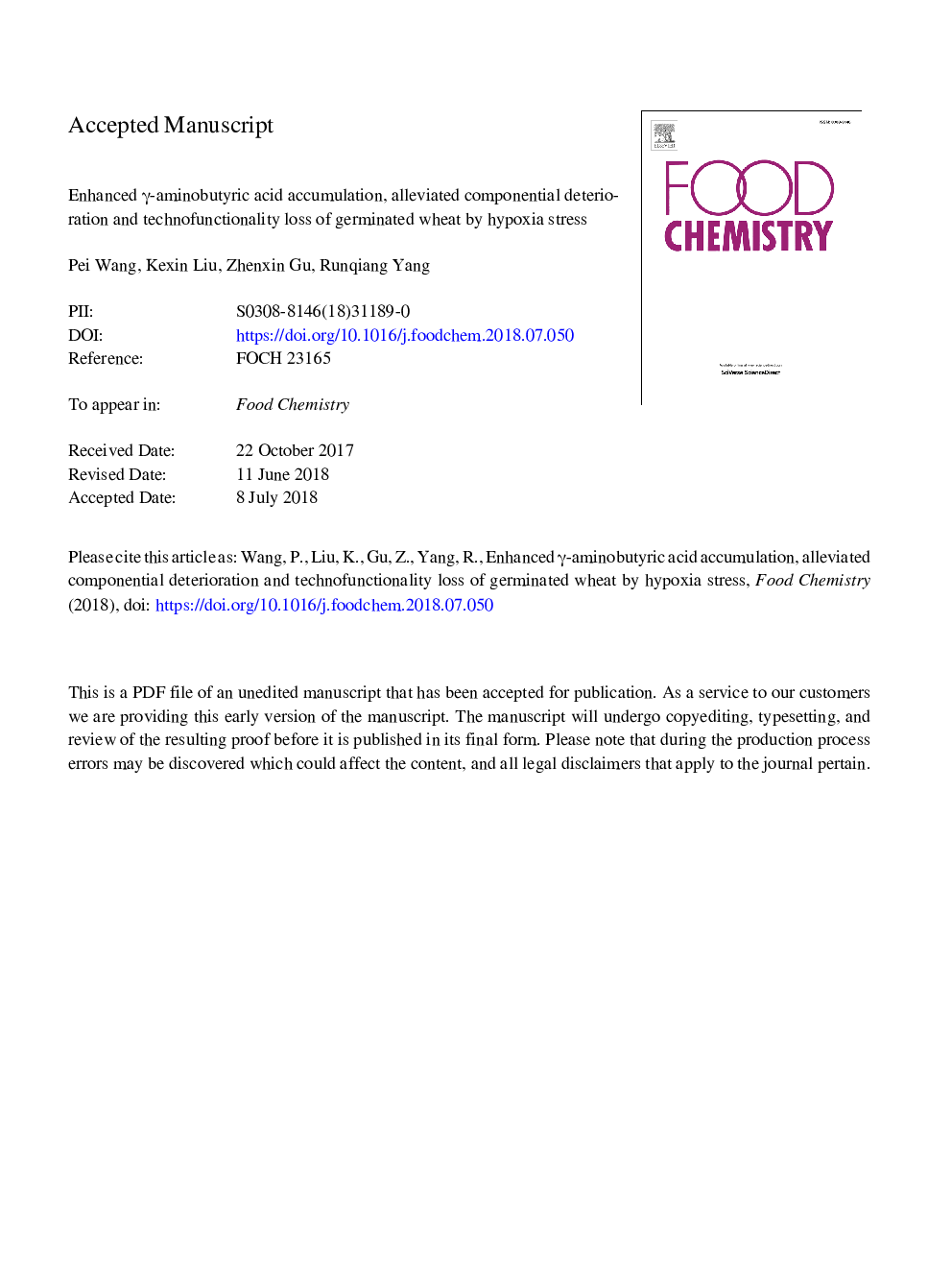| Article ID | Journal | Published Year | Pages | File Type |
|---|---|---|---|---|
| 7584303 | Food Chemistry | 2018 | 38 Pages |
Abstract
Germination is an effective biofortification strategy to enhance micronutrients of staple grains. The current study targeted at comparing the effects of normoxia and hypoxia on γ-aminobutyric acid (GABA) content and the componential changes underlying the technofunctionality of germinated wheat. Compared with ungerminated wheat, GABA maximumly enhanced by 88.73% and 50.70% in hypoxia- and normoxia-germinated wheat (HGW and NGW), respectively. Hypoxia suppressed the germination degree of wheat, which better preserved the technofunctionality. Compared with NGW, the proteolytic and α-amylase activities were partially inhibited for HGW, resulting in higher protein and starch content. The diminishment of gluten marcopolymers and soluble high-molecular-weight proteins, and conversion of α-helices to β-turns were alleviated in HGW, which contributed to the more viscoelastic dough. Meanwhile, superior pasting and gelation properties were mainly due to suppressed α-amylase activity and more starch content in HGW. The results suggested that HGW flour can be exploited as a functional staple ingredient.
Keywords
Related Topics
Physical Sciences and Engineering
Chemistry
Analytical Chemistry
Authors
Pei Wang, Kexin Liu, Zhenxin Gu, Runqiang Yang,
